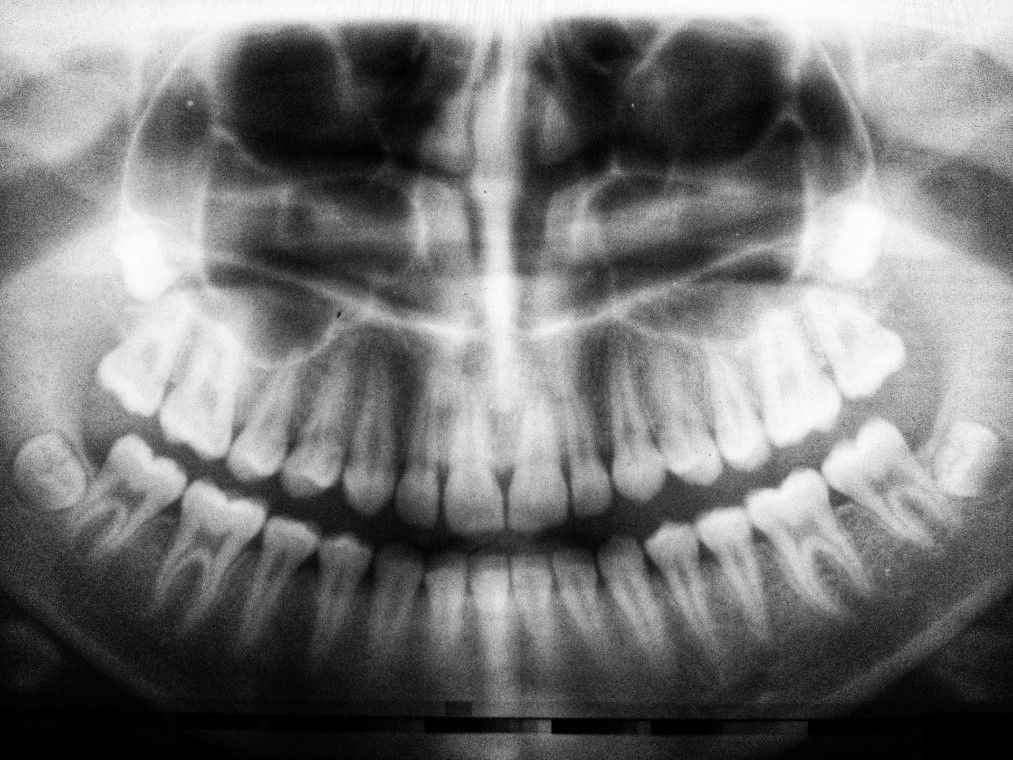
Originally published via Armageddon Prose:
If they don’t get you with the shots, they’ll get you at the dentist’s office, or the food supply, or any of a thousand other vectors.
Death by a thousand nano-cuts.
Most of the scientific literature on the topic of nanotech in dental materials is framed as theoretical — some far-off vision of a utopian future — when, in reality, it’s already likely in use at the clinic down the street from your house, likely without the knowledge of your dentist.
Via Indian Society of Periodontology (emphasis added):
“Nanotechnology in dentistry refers to new generation research carried out to develop newer technologies, restorative materials and drugs of Nano dimensions. The word ‘Nano’ refers to Nanoscale particles. Although the science of nanotechnology in dentistry is recent and less developed, but still has vast potential to show advancement and improvement in the field of dentistry. As nanotechnology is making firm grip in other fields such as drug delivery system and reducing toxicity by the emergence of more biocompatible materials. Clinicians, researchers, and manufacturers are taking keen interest and participation in the advancement of this field.”
You might recall the term “graphene oxide” from the heady COVID days; The Science™ claimed its presence in medical supplies was a conspiracy theory back when researchers looked under the hood of the mRNA shots and, curiously, found it there.
Graphene oxide, we are assured, will only be added to the novacaine and lidocaine because of its capacity to prolong the anesthetic effect —for our comfort and safety, as beloved patients, whom the medical system loves and wants to be happy.
Via Journal of Molecular Liquids (emphasis added):
“Nanomaterials rapidly improve our lives and lead to novel applications from biomedicine to electronics. Carbon nanomaterials are a special class of materials with limitless potential for practical medical applications. Graphene is a typical representative of two-dimensional nanomaterials with unique and outstanding properties. What is even more important when it comes to graphene’s practical applications is that it is readily available for synthesis and modifications. It is a single layer of carbon atoms in which each atom is covalently bonded to three neighbors.
Graphene is most frequently considered an adsorber of important molecules in biomedical applications, owing to its vast surface area of 2630 m2g−1. The great adsorbing potential makes it a candidate for developing sensing devices or drug delivery agents. In this work, we are addressing graphene adsorbing properties to tackle the challenge of prolonging the anesthetic effect. Namely, by using graphene as a drug delivery system, the idea is to release the active component and prolong the anesthetic effect slowly.”
The Science™ is also excited about embedding graphene oxide and other nanotech in dental implants and tooth whiteners.
Via Frontiers in Bioengineering and Biotechnology (emphasis added):
“It is important to improve the performance of titanium dental implants, and modifications of dental implant surfaces played an important role. Various biomaterials have been widely applied to enhance the osteogenic properties of dental implants. In addition, the peri-implantitis is also the main failure reason for dental implants. Therefore, it is of great importance to explore new excellent antibacterial surfaces of dental implant.
Nanomaterials have showed wonderful performances in improving the strength and resist wear of tooth fillers and sealants. Moreover, nanomaterials also performed excellent antimicrobial properties in the application of restorative materials. Owing to the above advantages, outstanding nanomaterials are widely applied in the dental fields of restorative materials, adhesives, cements, primers, and so on.
Among various nanomaterials, graphene, as a promising two-dimensional (2D) carbon-based nanomaterial, is the thinnest and strongest material. In 2004, it was first isolated by Novoselov and Geim using mechanical exfoliation with a sticky tape and they won the Nobel Prize in 2010. Graphene-based materials could be divided into four categories: single-layer graphene, few-layered graphene, graphene oxide (GO) and reduced graphene oxide (rGO). Owing to perfect physical properties, well electrical conductivity, and excellent biocompatibility, graphene and its derivative have attracted much attention in the field of medicine and biomedical fields. Moreover, graphene and its derivatives have also aroused great attentions in the field of dentistry and tissue engineering, dental implant coatings, bone cements, resin additives, and tooth whitening.”
Let us pay homage to our biomedical overlords with the holy sacrament of nanoparticle injections.
Blessed be the followers of Fauci.
Ben Bartee is an independent Bangkok-based American journalist with opposable thumbs.
Follow his stuff via Substack. Also, keep tabs via Twitter.
For hip Armageddon Prose t-shirts, hats, etc., peruse the merch store.
Support always welcome via the digital tip jar.
Bitcoin public address: bc1qvq4hgnx3eu09e0m2kk5uanxnm8ljfmpefwhawv